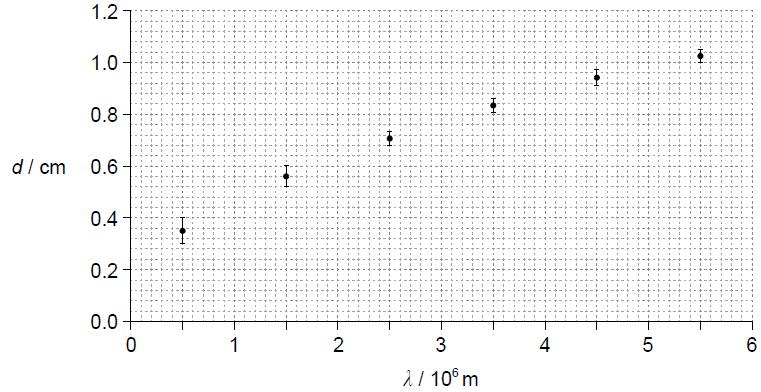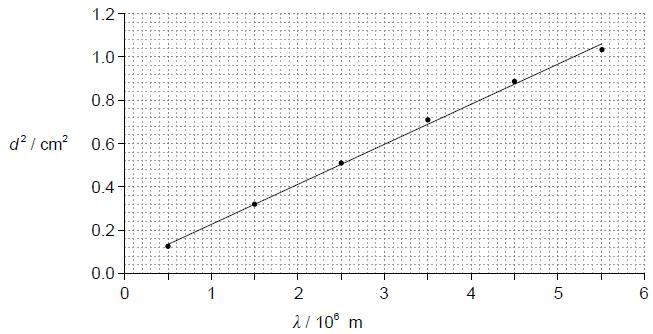
Topic 1 - Measurements and Uncertainties
Question 1
SLPaper 2A student strikes a tennis ball that is initially at rest so that it leaves the racquet at a speed of 64 m/s. The ball has a mass of 0.058 kg and the contact between the ball and the racquet lasts for 25 ms.
The student strikes the tennis ball at point P. The tennis ball is initially directed at an angle of 7.00° to the horizontal.

The following data are available:
- Height of P = 2.80 m
- Distance of student from net = 11.9 m
- Height of net = 0.910 m
- Initial speed of tennis ball = 64 m/s
Calculate the average force exerted by the racquet on the ball.
Calculate the time it takes the tennis ball to reach the net.
Calculate the average power delivered to the ball during the impact.
Show that the tennis ball passes over the net.
Determine the speed of the tennis ball as it strikes the ground.
Question 2
SLPaper 1A stone falls from rest to the bottom of a water well of depth d. The time t taken to fall is 2.0 ± 0.2 s. The depth of the well is calculated to be 20 m using d = . The uncertainty in a is negligible.
What is the absolute uncertainty in d?
Question 3
SLPaper 3A.radio wave of wavelength is incident on a conductor. The graph shows the variation with wavelength of the maximum distance d travelled inside the conductor.

For = 5.0 x10^5 m, calculate the
The graph shows the variation with wavelength of d^2. Error bars are not shown and the line of best-fit has been drawn.

A.student states that the equation of the line of best-fit is d^2 = a + *b. When d^2 and are expressed in terms of fundamental SI units, the student finds that a = 0.040 x10^-4 and b = 1.8 x10^-11.
Suggest why it is unlikely that the relation between d and is linear.
fractional uncertainty in .
percentage uncertainty in .
State the fundamental SI unit of the constant and of the constant .
Question 4
HLPaper 1A student is verifying the equation The percentage uncertainties are:
| Quantity | Uncertainty |
|---|---|
What is the percentage uncertainty in x?
Question 5
SLPaper 1An object is positioned in a gravitational field. The measurement of gravitational force acting on the object has an uncertainty of 3% and the uncertainty in the mass of the object is 9%. What is the uncertainty in the gravitational field strength of the field?
Question 6
HLPaper 1What is a correct value for the charge on an electron?
Question 7
SLPaper 1A boy jumps from a wall 3m high. What is an estimate of the change in momentum of the boy when he lands without rebounding?
Question 8
SLPaper 1The length of the side of a cube is . The mass of the cube is . What is the percentage uncertainty of the density of the cube?
Question 9
SLPaper 2A girl rides a bicycle that is powered by an electric motor. A battery transfers energy to the electric motor. The emf of the battery is and it can deliver a charge of when discharging completely from a full charge.
The maximum speed of the girl on a horizontal road is with energy from the battery alone. The maximum distance that the girl can travel under these conditions is .
The bicycle and the girl have a total mass of . The girl rides up a slope that is at an angle of to the horizontal.

The bicycle has a meter that displays the current and the terminal potential difference (pd) for the battery when the motor is running. The diagram shows the meter readings at one instant. The emf of the cell is .
The battery is made from an arrangement of 10 identical cells as shown.

Show that the time taken for the battery to discharge is about s.
Deduce that the average power output of the battery is about 240 W.
Friction and air resistance act on the bicycle and the girl when they move. Assume that all the energy is transferred from the battery to the electric motor. Determine the total average resistive force that acts on the bicycle and the girl.
Calculate the component of weight for the bicycle and girl acting down the slope.
The battery continues to give an output power of 240 W. Assume that the resistive forces are the same as in (a)(iii).
Calculate the maximum speed of the bicycle and the girl up the slope.
On another journey up the slope, the girl carries an additional mass. Explain whether carrying this mass will change the maximum distance that the bicycle can travel along the slope.
Determine the internal resistance of the battery.
Calculate the emf of one cell.
Calculate the internal resistance of cell.
Question 10
SLPaper 1Which is a vector quantity?
